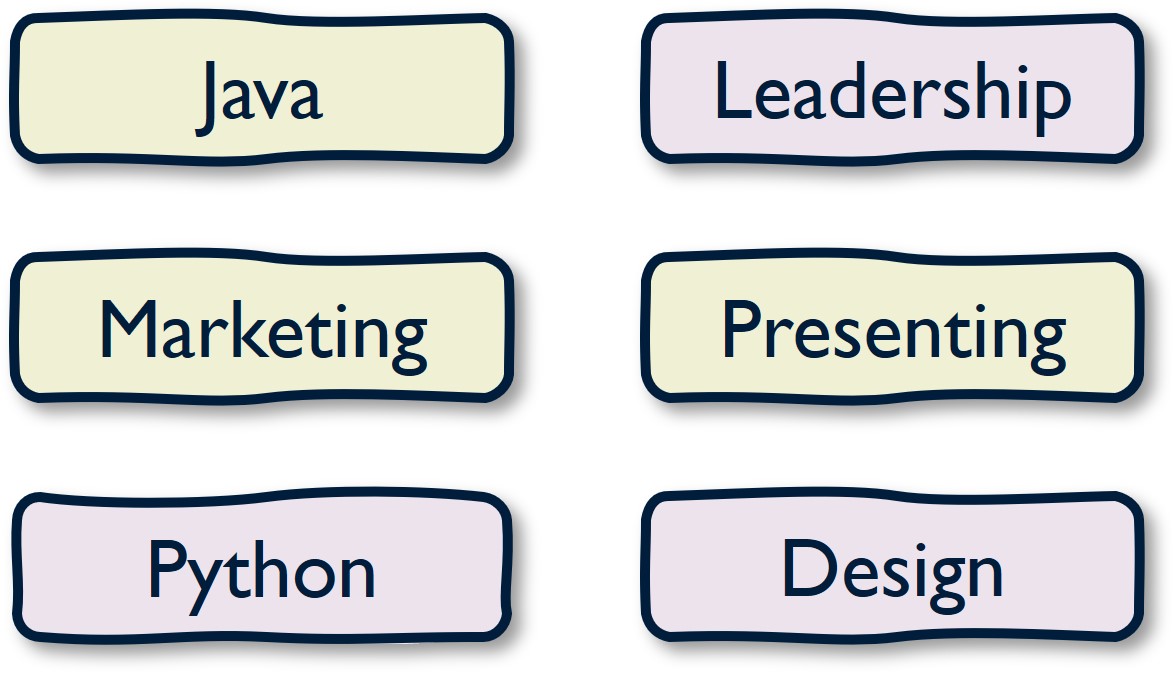Introduction
Do you have a thriving consultancy business? Plenty of clients are very satisfied with your experts’ work efforts. You have plenty of skilled experts that can deliver top-notch service. But still, every week, you feel exhausted and frustrated with all the work you need to do for project resourcing and employee skills management.
Maybe you work as a project manager or as a salesperson offering new projects to customers. Every week you find yourself wondering who has the skills to start the newly sold projects. Who is skilled enough to take on another project along with the current project? Or are there any skills you are not aware of?
Sounds familiar? Read on and I walk through with you how you can build a robust resource management machine and avoid the weekly frustrations in project resourcing. I have ten years of experience in project resourcing from consultancy companies, big and small. I have experienced these pain points and felt the frustration myself as well. You just need to create the right process for the resourcing.
Here, I share with you some of the key findings I have made to ease my own work. I try to keep it extremely simple, just follow the steps here one by one. You don’t need to do everything once, but start with one and proceed as it fits for you.
1. Build a skills inventory – the basis for project resourcing
In the dynamic world of consultancy, each project is a new puzzle. But imagine trying to solve these puzzles without knowing which pieces you have. This is the same as trying to resource projects without knowing the skills of the employees. Who is the best fit? The first thing you need to do is to understand who knows what.
Extract the minimum information for each person: list skills and proficiency levels. This will get you started with employee skills management by building a skills inventory.
2. Regular check-ins on career goals
Don’t underestimate the consultants’ hunger to learn new skills. Start yourself, or ask their managers to hold regular one-on-one meetings to understand each team member’s career aspirations and growth plan.
We did this in one smaller consultancy organization, and it not only helped in aligning projects with their interests but also boosted motivation and engagement. When you start this, add to your skills inventory the target levels also for different skills to mark areas where your employees are most interested. Remember also to mark those skills where the employee does not yet have any skill (skill level is 0) but wants to learn. Utilize this data when resourcing new projects.
3. Dynamic team resourcing for projects
Now you have the skills inventory in place and can start using it. In your next weekly project resourcing meeting, take your skill inventory with you in the project resource meeting and find suitable candidates for projects by searching the list.
4. Calculate the skill gaps
With the skills data, you can calculate simply the skill gaps for each skill of a person. There is a simple formula for each skill gap.
G = T – P
- G = Skill gap for a particular skill of a person
- T = Target skill level for a particular skill of a person
- P = Proficiency level for a particular skill of a person
Positive numbers mean that there is a skill gap, and negative numbers and zero, mean that there is not. The larger the number the larger the gap is.
Visualize the skill gaps
The final step is to use an Excel or other spreadsheet program to visualize all the people and their skill levels. Use rows for people and columns for skills.
- Create one sheet for persons and their current skill levels
- Create another sheet with the persons and their target skills
- Create a third sheet where you calculate the skill gaps with the above formula using the data from the sheet of points 1 & 2.
Now you have a skill matrix, a skill target matrix as well a skill gap matrix. This data visualization is already useful because I bet that with your knowledge you can already spot the skills that need enhancements in your projects.
5. Understand the project resourcing needs
Even though you already have a good gut feeling about your project’s resourcing needs, it is good to have the facts straight and not just trust the intuition. This is one of the key steps in employee skills management because it will drive your value creation.
Create statistics from your past, ongoing, and known future projects, and asses the projects’ needs for skills on the same scale as for team members. There you have statistics of the skill levels and the frequency of each skill needed. You can fine-tune the skill gap analysis by giving weight to each skill in your skill matrix.
From this project skill matrix, you can calculate your average project skill level needs and the percentage of how many of your projects need a particular skill. Use this data in the next step.
6. Invest in training and development
Once you have got your daily routines right, it is time to focus also for longer-term development.
Using your skill matrices and one-to-one discussions make plans for further development and education for your team members. You need to make a long-term commitment to your team’s growth.
Read more: Skills management tool: When should you purchase one?
Conclusion
In the consultancy business, understanding and leveraging your team’s specific skills and aspirations is not just an HR function; it’s a strategic action. Many roles face the need for skills and knowledge in organizations. Often project managers desperately need this information. At the same time, it is sadly too often buried in a rarely used HR tool.
As you saw, you can take control of your project resourcing process with quite simple steps by turning the focus on skill-based resourcing. With these methods resourcing is no longer a guesswork, you have much more control over projects and can concentrate on and enjoy the execution phase. Employee skill management can truly make a difference in the project resourcing.
Skilby aims to help all project managers with skill-based project resourcing.

